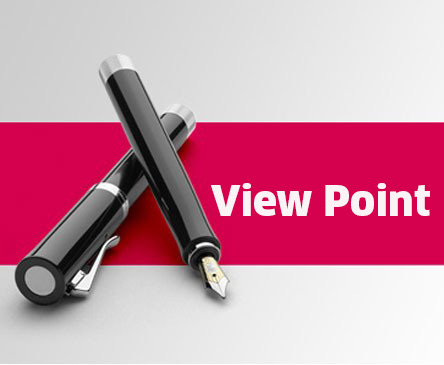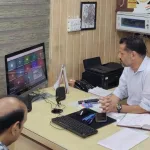Human curiosity — the impulse to look beyond the known — has never been more alive, more urgent, and more fascinating than it is today. From the very beginning of our existence, we have been driven to challenge nature’s boundaries, to defy the so-called impossibilities, often regardless of the cost.
Time and again, we have moved forward with the simple mantra: “We’ll figure it out.” But what happens when this relentless defiance leads us to a place so unimaginable, so profoundly disruptive, that the very idea of what it means to be human is brought into question? Will we still have the courage—or the recklessness—to explore the unknown?
Drawing an analogy to describe the scale of change AI is likely to bring is nearly impossible. Even more difficult is explaining the eerie indifference that much of the general population seems to display in the face of such transformation. Perhaps it stems once again from that age-old belief: “We’ll figure it out.” Or maybe, paradoxically, we — the most informed generation in human history — are also the most unaware, or even the most ignorant.
There is no doubt that conversations about AI are vibrant among experts, analysts, and technologists. Discussions around its potential are filled with both promise and peril. But these conversations remain confined to a relatively narrow circle. They haven’t permeated the broader public consciousness to the extent they should. Maybe some of us do understand what lies ahead — and maybe none of us really do. That uncertainty is what this article seeks to explore: a modest attempt to project possible outcomes before we find ourselves living through them — or before we lose the very ability to think, write, and create as the planet’s most intelligent beings — for now.
At the heart of every meaningful discussion about AI lies a fundamental question: What will it do to human agency and identity? For millennia, as far back as human memory and record stretch, humans have been the most intelligent species on Earth. We’ve used our brains — not brawn — to dominate, innovate, and survive. But what happens when Artificial General Intelligence (AGI) becomes real?
To some, that idea still sounds preposterous. But so did the idea of the internet, or 3D printing, or the telephone — until they became reality. Once again, humanity finds itself tinkering with the impossible. And although we remain, for now, the apex thinkers, we must ask: What happens when the machines we’ve built begin to match or exceed our own intelligence?
When we begin outsourcing to machines the one task that made us unique — thinking — what then? The optimists will argue that we’ll gain more time, more leisure, more freedom to pursue joy and creativity. But what happens to my niece who loves to draw? When a machine can produce sketches ten times better than hers with a single prompt — with a level of detail and customization she cannot imagine — where does that leave her creativity? Where does it leave our love for writing, for art, for building things with our own minds and hands?
These are the questions we must begin to ask now — before the answers are made for us, before the machines learn to ask on our behalf. This disruptive scenario is precisely what Alvin Toffler presciently described as “Future Shock” — a psychological state in which individuals and societies are overwhelmed by too much change in too short a time.
In his groundbreaking work, Toffler traced the historical trajectory of disruptions brought about by technological advances — from the Agricultural Revolution to the Industrial Revolution, and then to the Age of the Internet — observing that each successive wave arrived faster and with greater impact than the one before. He warned that this accelerating pace of innovation would not only unsettle individuals, making them question their own identity, but also throw entire families, communities, institutions, and systems of governance in a state of disequilibrium.
Yuval Noah Harari explains how AI is unlike any technological advancement humanity has ever witnessed. It can generate new ideas independently, learn on its own, and function without human direction. Ironically, our definitions of technology are now so outdated that the current state of AI is often described as “fledgling.” But if we accept this description for a moment, one can only imagine how terrifying its adolescence and maturity might be.
Today, we stand at exactly such a crossroads—and a pivot is urgently needed. Innovation is no longer arriving in isolated bursts; it is converging, compounding, and reshaping every aspect of our lives, often before we’ve had the chance to adapt to the previous wave of change. The very definitions that should help structure our new reality are now fluid, obscure, and wavy—a telling sign of how unprepared we are for what confronts us.
Similarly the debate around AI contains a fundamental question of definitions—the very building blocks of how we perceive and organize the world around us. Humanity has spent millennia evolving a shared set of concepts, values, and meanings that form the basis of modern civilization.
With the advent of AI, many of these long-standing definitions are now poised for a radical transformation. What constitutes creativity, for instance, is no longer a settled idea. If machines can compose symphonies, paint evocative images, or write moving prose, do humans still need to be creative—or are we on the brink of outsourcing imagination itself?
It is becoming increasingly difficult to separate the human from the machine—especially when machines are not only beginning to match human precision but also replicate our imperfections. In a sea of creative ideas, the line between the authentic and the artificially generated grows ever more blurred. These shifts are already evident in fields like creative writing and digital art. In fact, you can’t even be certain whether the article you’re reading right now is entirely written by a human—or subtly enhanced, or perhaps even entirely produced, by an AI. And this is happening while AI is still in its infancy.
This shift extends into daily life in surprisingly subtle ways. Will individuals make more informed personal choices with the aid of AI, or will these tools erode the last vestiges of human free will? Should I decide whether a brownie complements my morning coffee, or will a machine suggest that hazelnuts are a better pairing?
It would be hard for us to separate the human from the machine—when machines begin to match not only human perfections but also our imperfections. When, in a sea of creative output, we find ourselves unable to tell what is genuinely human and what is generated by algorithms. Such confusion is no longer a hypothetical—it is already visible in genres like creative writing, visual design, and more.
And then arise the deeper ethical dilemmas. How far are we willing to outsource moral responsibility? If, in a future geopolitical crises, an AI system advises a Russian president to bomb Kharkiv in retaliation for a Ukrainian strike, who bears accountability—the machine, its creators, or the political actor? A fuzzy specter emerges, one bereft of any agency that can be held to account.
Although some of us view AI as an emotionally neutral and entirely rational entity—one capable of making objective decisions—we often forget that, at least in some part of its journey, AI will carry and exhibit the biases and stereotypes embedded in its training data and source code. These are human flaws, reflected back at us by machines we’ve built ourselves.
This raises urgent questions of legislation and accountability. Will we need a comprehensive legal framework to govern AI? If AI commits a discriminatory act, do tech leaders like Sam Altman or Mark Zuckerberg face consequences for what their systems have done? Or, in another context, does an Indian entrepreneur face legal action under the SC/ST (Prevention of Atrocities) Act if their AI system produces caste-biased outcomes?
It is a puzzle—complex, evolving, and deeply human. AI is not merely a technological revolution; it is a philosophical and moral challenge that compels us to reconsider what it means to be responsible, what it means to be creative, and ultimately, what it means to be human.
The signs are unmistakable. Family dynamics are fraying under the weight of digital immersion. Traditional job roles are vanishing before new ones can meaningfully take shape. Social relationships are becoming increasingly transactional, eroded by algorithmic engagement and widespread screen fatigue. Even organizations, once seen as anchors of stability, now struggle to plan for the long term in a world of relentless, exponential disruption. The once-envied cold bureaucratic structures are under growing strain and stress.
AI is bound to disrupt the educational structures that underpin the global labor market today. The concept of mass education, a child of the Industrial Revolution — later evolved to support the knowledge economy of the Internet Age. However, the rise of AI will demand a drastic pivot toward a fundamentally different mode of learning. A mode of learning which possesses an inherent capacity to learn, unlearn and re learn.
AI will structure an entirely different architecture between the haves and the have-nots. It will increasingly cause those void of agency to fall further behind in an ever-widening technological gulf, leading to despair and creating conditions fertile for social unrest, thus endangering the social capital that once served as the safety net of society.
Unbridled innovation—however noble or well-intentioned—is not without its consequences. American philosopher, Michael Sandel affirms that without ethical guardrails, we risk building tools that will ultimately shortchange us. What we are witnessing is a kind of technological leapfrogging: a rush forward before we’ve fully understood the cost of where we currently stand.
Emerging research reveals that our growing dependence on AI is beginning to affect our neural architecture. Cognitive scientists warn that key brain regions—particularly those associated with memory recall, spatial reasoning, and creative problem-solving—are shrinking in individuals who habitually outsource thinking to machines. The brain, like any muscle, atrophies when it is underused. Thought processes built through trial, error, observation, and reflection are now eroding, replaced by instant, machine-generated answers.
The threat of disinformation is equally alarming. Recent global conflicts have demonstrated how hostile actors are deploying AI-powered propaganda to manipulate perception, distort facts, and deepen divisions. We have seen the proliferation of deepfakes, synthetic media, and AI-generated narratives used to fuel misinformation at massive scale. The battleground has moved from physical territories to digital ecosystems, where psychological operations and information warfare target the minds and emotions of populations.
If intentions are not innocuous, these tools have the potential to dismantle reputations, destabilize democracies, and fracture social cohesion. Our societal structures—familial, social, educational, political, judicial, and media—are all built on a fragile foundation of trust and perception. When that trust is manipulated by invisible algorithms and synthetic realities, the fallout could be catastrophic—and potentially beyond repair.
This isn’t to sound alarmist or to label AI as a doomsday device. On the contrary, AI may well be humanity’s greatest tool — capable of diagnosing fatal diseases, exploring distant galaxies, unraveling nature’s deepest mysteries, deepening democracies, strengthening financial systems, and sparking a new philosophical renaissance — much of which will be the focus of our next article.
Yet, the same power that promises progress also harbors disruption. Where there is potential for greatness, catastrophe often lingers. Perhaps, only time holds the answers.
So yes, we may figure it out.
But the real question is: Will we figure it out in time?
(Authors are serving officers in J&K Administrative service and can be reached at [email protected] and [email protected] )








